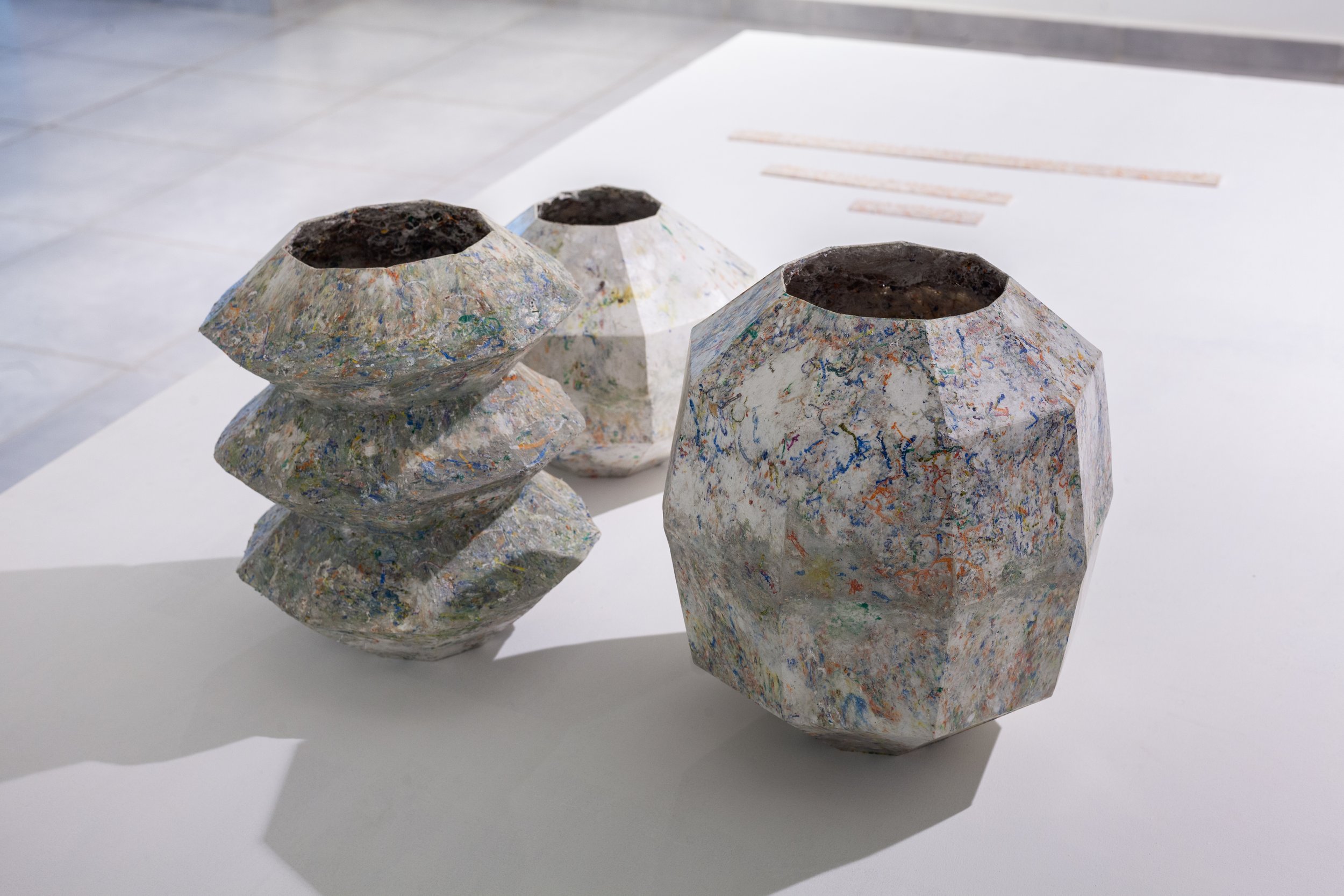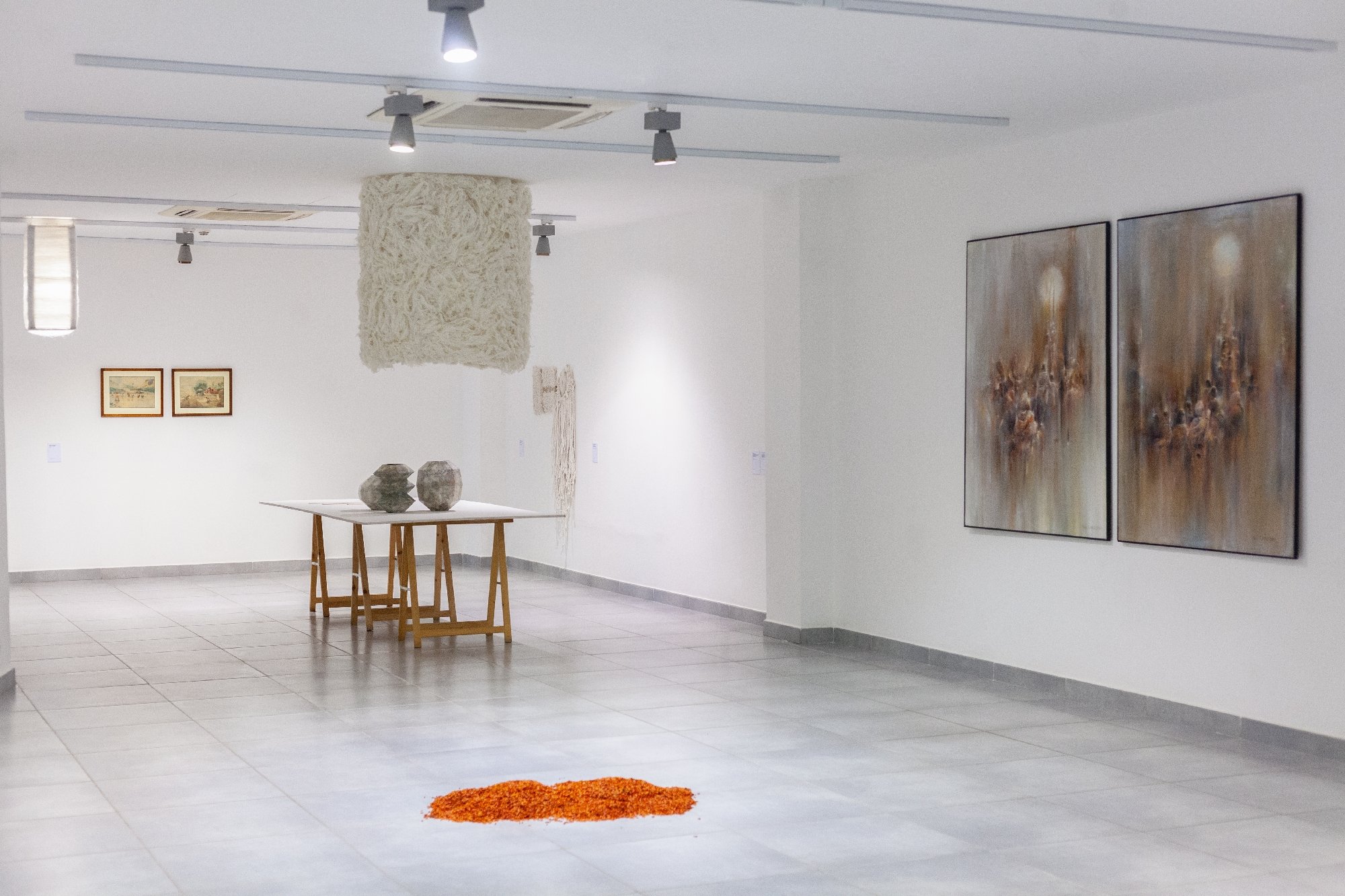A look inside the opening show at Joël Andrianomearisoa’s new contemporary art space in Madagascar
Madagascar is everywhere and nowhere it seems; a country many can mythologise on but few can place. It is this intangibility surrounding the island, itself a landscape harnessing many influences and dualities, that the creation of the new Hakanto Contemporary arts space in Antananarivo looks to, if not pin-down, at least bear witness to.
Founded by, and under the artistic direction of, artist Joël Andrianomearisoa, the independent, non-profit space takes its name from the Malagasy word for ‘aesthetic’ and looks to celebrate and support artistic creativity in all its forms. Encompassing exhibitions, studio spaces and residency programmes, the centre will be the first of its kind in the country, showcasing the richness of contemporary Malagasy art.
“We are not following the rules of art history here,” Andrianomearisoa asserts. Having represented his country at the Venice Biennale in 2019, the artist was determined to capitalise on the groundswell of interest, internationally of course, but perhaps more importantly, nationally. With no established arts centres or schools across the country, yet a proliferation of talent and passion throughout, it was time to redefine the arts scene in Madagascar. Hakanto Contemporary represents his exciting first step. Located in the Ankadimbahoaka district, just south of the capital, the centre is free to the public and encourages educational tours and visits.
Ny Fitiavanay / Our Love / Notre Amour is the first exhibition to open to international audiences, following the lifting of travel restrictions due to the pandemic. Taking its title from Madagascar’s national anthem, the group exhibition showcases 26 Malagasy artists (the chosen number reflecting the country’s day of independence: 26 June 1960) and explores concepts of nationalism, politics, dependence, independence and interdependence.
The works on show are complex and multifaceted, much like Madagascar's relationship to independence itself. “Independence is a pure illusion,” suggests Serge Henri Rodin in a written-word piece displayed as wall text within the exhibition. Considering the concept himself, Andrianomearisoa offers: “We did not achieve independence In 1960… We have always just played with it.”
“Madagascar is too big to comprehend and too hard to define; this is what makes it so mysterious, so enchanting”
Playful, but important, commentaries run throughout, embracing photography, sculpture, written word, video and works on canvas, amongst many other media. “Madagascar is made with many things,” Andrianomearisoa explains, nodding to the multifarious pieces on show. “It is large – three times bigger than France. It is too big to comprehend and too hard to define; this is what makes it so mysterious, so enchanting.”
The capricious duality of land and water, central to an island which often struggles to coexist with the waters that can dominate, appear in many of the poetic works on show. “Art can allow us to breathe, even under water,” Andrianomearisoa asserts. Explorations of material culture run throughout, particularly through the symbol of the Malagasy Lamba (a traditional cloth worn wrapped around the body) which is undressed through works as diverse as Viviane Rakotoarivony’s contemporary street photography to Antoine Ratrena’s 1911 oil on canvas.
Sculptural works by the young artist collective Ndao Hanovao appear at first to be delicate earthen ceramics. Instead, they reveal works which grapple with a material blighting the landscape - single use plastics. Using an innovative polyfloss machine, discarded plastic is re-envisioned as art works and design products. This sense of ingenuity does not belong only to the more emerging artists on show. Another standout piece recreates a 1990s ‘it bag’, conceived and manufactured in Madagascar but widely loved across Europe at the time. Presenting the country’s iconic Rova of Antananarivo in raffia (a homage following its burning in 1995), the must-have accessory itself represents a complex emblem of independence. Despite its colonial past, the Queen’s Palace for many remains a symbol of national pride.
Finally, Madagascar’s rich history of poetry, from traditional verse to the slam poets discussed in detail in the artist and sociologist Zoly Rakotonieara’s wall-based text work, provides a narrative that weaves throughout the exhibition. Trying to define with words, many across two or three languages (Malagasy, French and English), what it means not only to be Malagasy, but to be human altogether, the text pieces expose both the depth and limits of words.
Rakotonieara’s interrogation of the language of slam itself considers how Madagascar's youthful poetry scene interacts and questions nationalism today. “Patriotic love in slam poetry first of all consists in pointing out the injustice, poverty and all forms of violence in which the population lives,” Rakotoniera explains. “It also includes consciousness-raising and call to action for a better future.” This duality of both critical acceptance and yet hopeful resistance, not only concludes her piece, but perhaps also offers the closest to a definition of Hakanto Contemporary’s manifesto as a whole.
‘We should use our talent to serve our country; that is the simplest and most sincere expression of patriotism.’
With the birth of Hakanto Contemporary, it seems Madagascar is set to do just that.
Ny Fitiavanay / Our Love / Notre Amour is on view until 16 March at Hakanto Contemporary, Ankadimbahoaka, Madagascar
Joël Andrianomearisoa has upcoming exhibitions at Zeitz Mocca and MACAAL in 2022.






